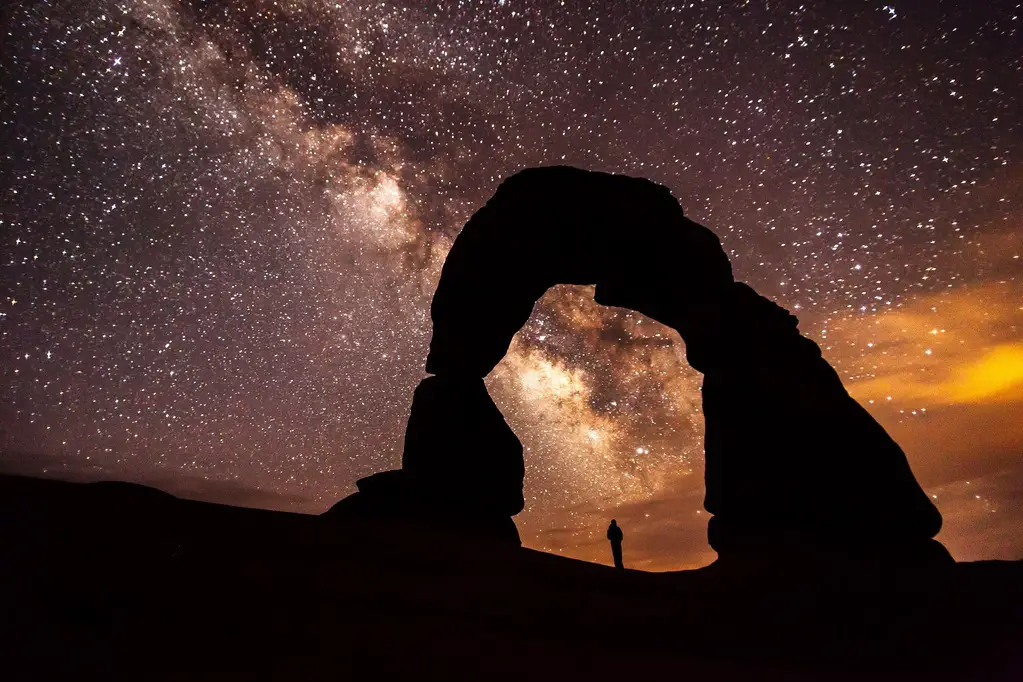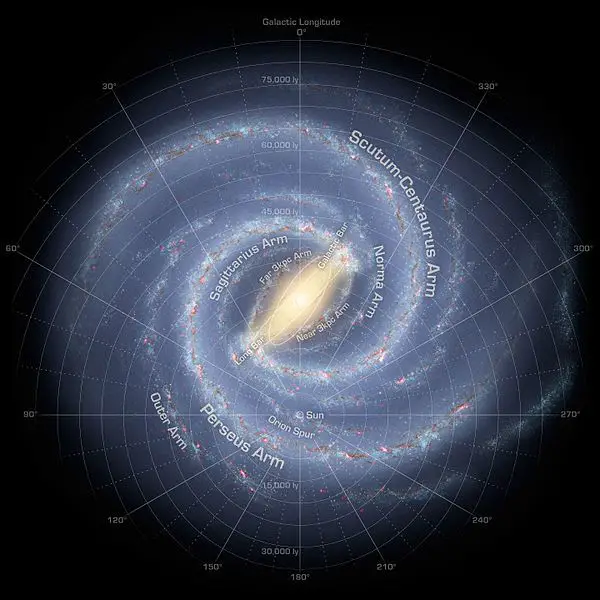 We live in the Milky Way galaxy, a spiral galaxy composed of billions of stars spread throughout it, but how did it get its name? Since many things in the sky were named based on basic observations, the naming of the Milky Way is more simple than you might once have thought.
We live in the Milky Way galaxy, a spiral galaxy composed of billions of stars spread throughout it, but how did it get its name? Since many things in the sky were named based on basic observations, the naming of the Milky Way is more simple than you might once have thought.
The Milky Way is so massive that is would take you 100,000 years to travel from one side to the other at the speed of light, and the earth sits on the outer reaches of the galaxy, about 165 quadrillion miles away from the massive black hole that sits at the center and drags everything in it. But what makes it “Milky”?
The name of the Milky Way comes from the way it looks in the night sky. If you can get away from enough ambient light, the sky takes on a milky appearance as the stars stretch across the night sky. The word “galaxy” actually derives from the Greek word “galaxias” which means “milky one”, and “galaktikos” which means “milky circle”. The Romans even called it Via Lactea, which means “The Road of Milk”.
Interestingly, the Milky Way is not composed a galaxy by itself. The appearance of the Milky Way includes a huge number of other galaxies in the sky. It wasn’t until the 20th century that this was discovered to be the case. Edwin Hubble, whom the Hubble telescope was named, observed that there were other galaxies beyond the Milky Way.
Hopefully no one thought it was named after the candy bar.
 Other Amazing Facts About the Milky Way
Other Amazing Facts About the Milky Way
The Milky Way is disc-shaped with a bulging center that is 12,000 light years in diameter, but it isn’t completely flat. Two dwarf galaxies called the Large and Small Magellanic Clouds are pulling on the Milky Way’s hydrogen gas and dark matter and warping it out of shape.
The Milky Way is far from the largest of the galaxies in the sky. It’s believed to have over 200 billion stars, but this is miniscule in comparison to the largest known galaxy, IC 1101, which is believed to have over 100 trillion stars. The most stars you can see from a fixed point on earth is about 2,500.
The Milky Way got its shape from gobbling up other galaxies. The stars of the Canis Major Dwarf Galaxy, the closest galaxy to the Milky Way, is even having its stars added to the Milky Way at this very moment.
The center of the Milky Way is known as Sagittarius A, a supermassive black hole that is believed to be 14 million miles in diameter. All of the mass in the disc of the black hole has a mass 4.6 million times of that of our sun and is about the size of the earth’s orbit around the sun.
We don’t really know what the Milky Way looks like since we’re right inside it. All pictures of the Milky Way are based on an artist’s interpretation of what it would like if we could be outside it.
The Milky Way is actually part of a group of galaxies that are collectively known as the Local Group where the other galaxies are within 150 million light-years of each other. The closest spiral galaxy to us is the Andromeda Galaxy. The Local Group is in an even larger group of galaxies called the Virgo Supercluster. This huge group is just an extremely tiny segment of our universe.
The Milky Way is moving just like the earth does around the sun, but it travels at around 1.4 million miles per hour. Try wrapping your head around that one.
Other Reading You Might Like


